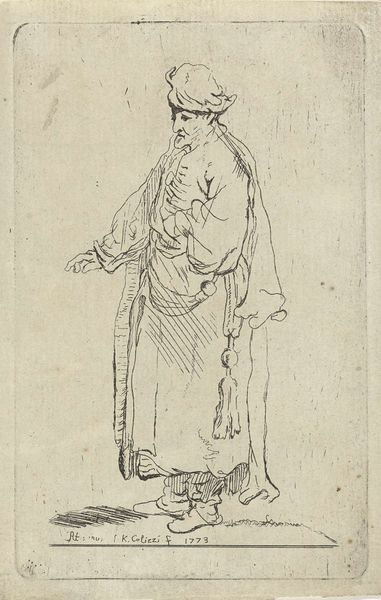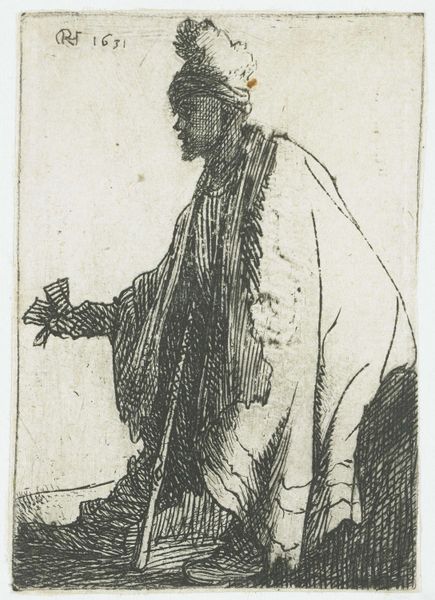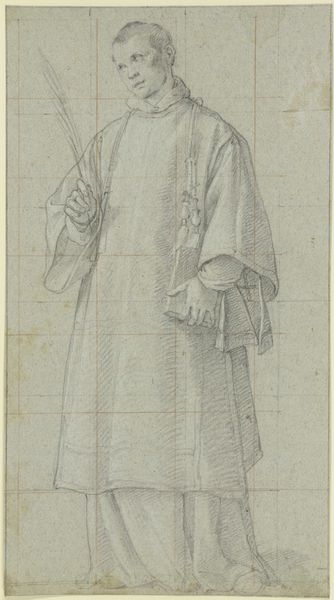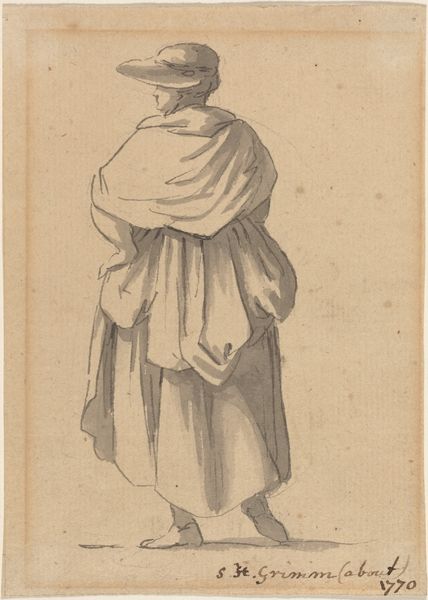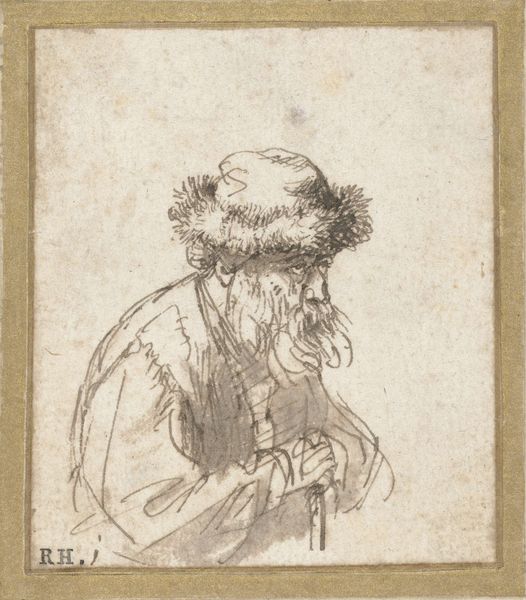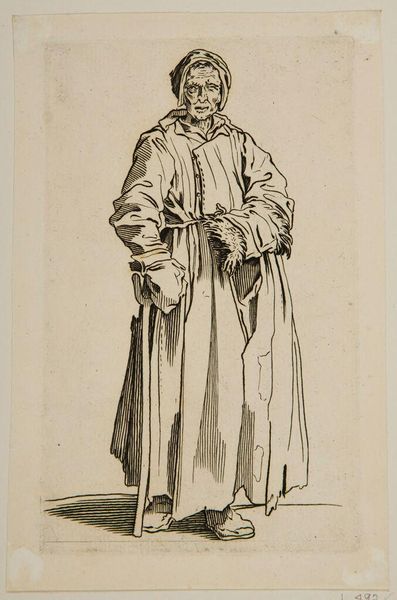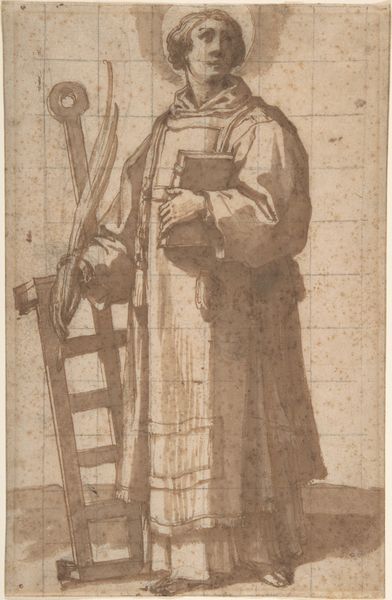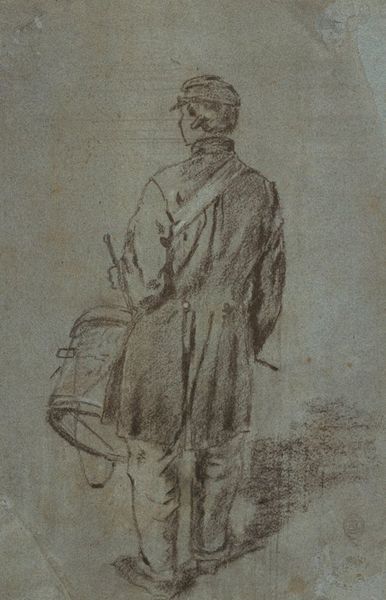
drawing, paper, ink, pencil
#
portrait
#
drawing
#
baroque
#
pencil sketch
#
figuration
#
paper
#
ink
#
pencil drawing
#
pencil
Dimensions: height 95 mm, width 57 mm
Copyright: Rijks Museum: Open Domain
Editor: Here we have "Standing Man, with Arms Akimbo," a drawing in ink and pencil on paper by Willem Drost, dating from around 1650 to 1655. It strikes me as a rather confident pose, but the loose lines give it a somewhat informal feeling. How do you interpret this work? Curator: The stance certainly exudes confidence, but let's unpack that. Drost, situated within the Dutch Golden Age, was undoubtedly aware of representing social status and identity through portraiture. The akimbo pose itself – hands on hips – can signal assertiveness, but considering the broader socio-political context of 17th-century Dutch society, how might this seemingly simple gesture carry deeper implications regarding class and possibly even dissent? Editor: That's interesting! I hadn't considered the possibility of "dissent." How might the pose relate to dissent? Curator: Well, consider that Drost was a student of Rembrandt. Think about Rembrandt's own challenges to the established artistic norms and his engagement with marginalized communities. Could Drost be subtly echoing a similar sentiment here? The subject's clothing, while not explicitly ragged, is also not overly elaborate, is it? How might Drost be playing with visual cues to represent something beyond simple self-assurance? What do you notice about his gaze? Editor: His gaze seems direct, unwavering almost. And you're right, his clothes, while not poor, lack the extravagance of typical aristocratic portraits. It's making me rethink my initial read of confidence; maybe it's defiance? Curator: Precisely. Art serves as a record of the moment it was produced, and we need to use what we know about the circumstances that generated that piece to fully appreciate it. Looking at it now, in what other ways might identity or social commentary present itself in this work? Editor: Looking at it through that lens, I see not just a standing man, but a statement – a challenge to the prevailing norms. Thank you. Curator: And thank you. Bringing our own backgrounds into viewing these historical objects really provides important perspectives on history.
Comments
No comments
Be the first to comment and join the conversation on the ultimate creative platform.


